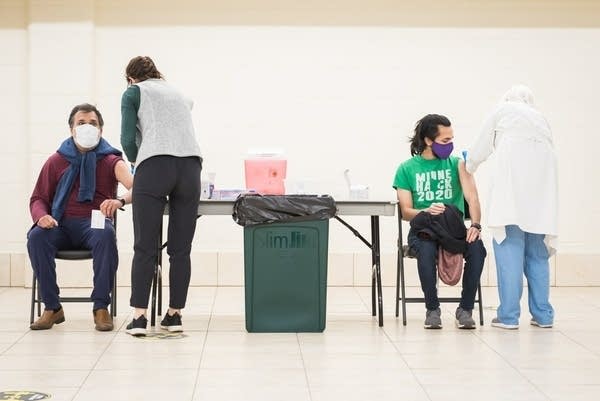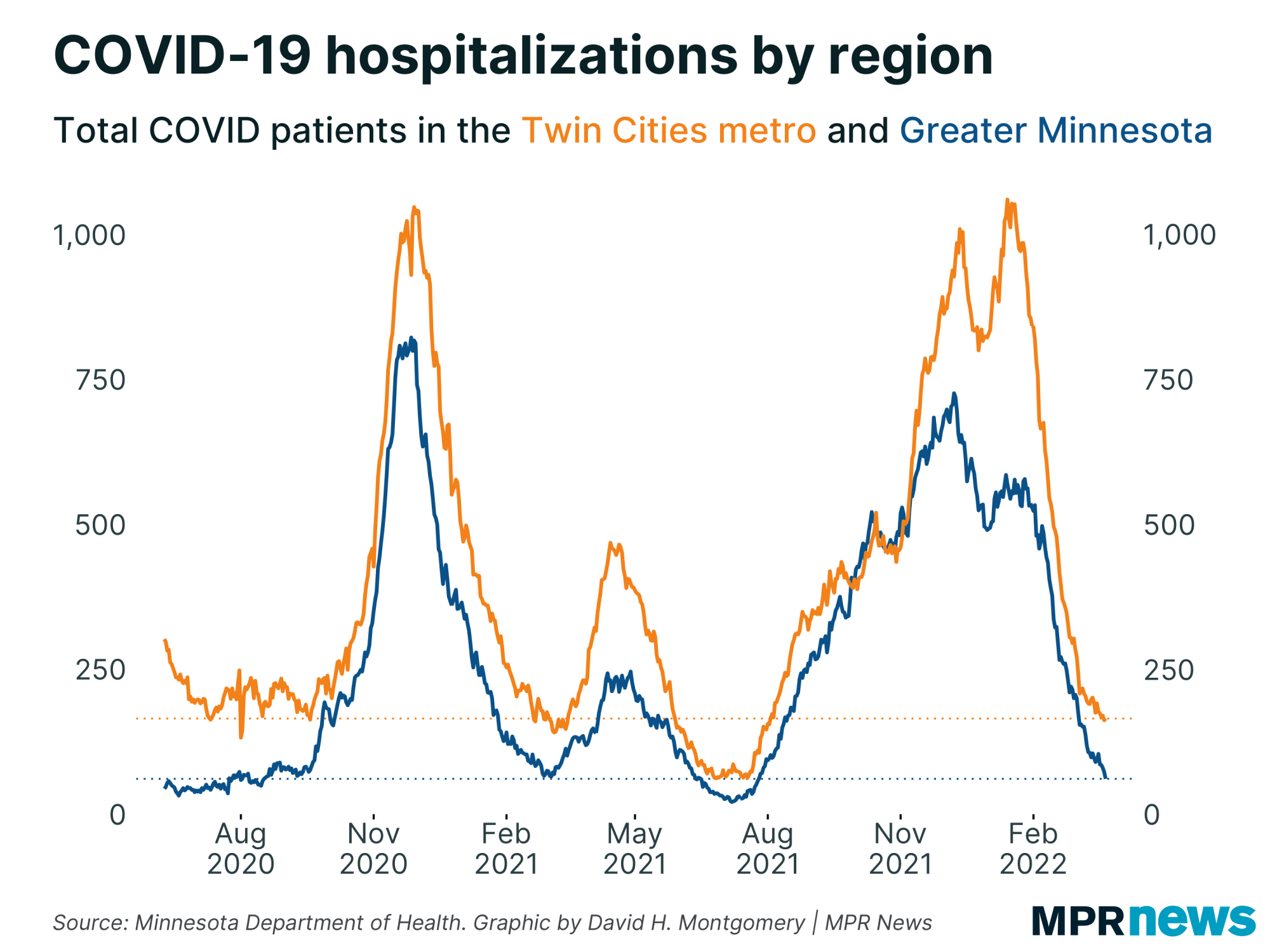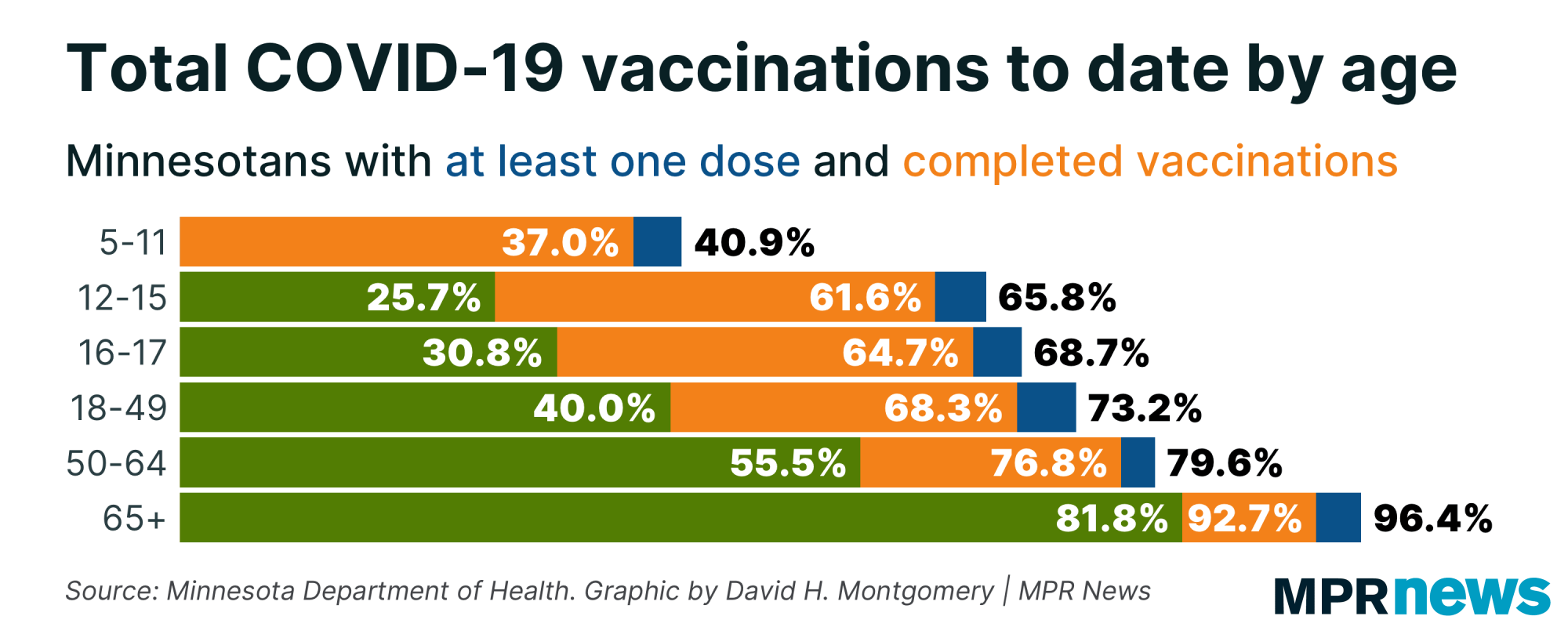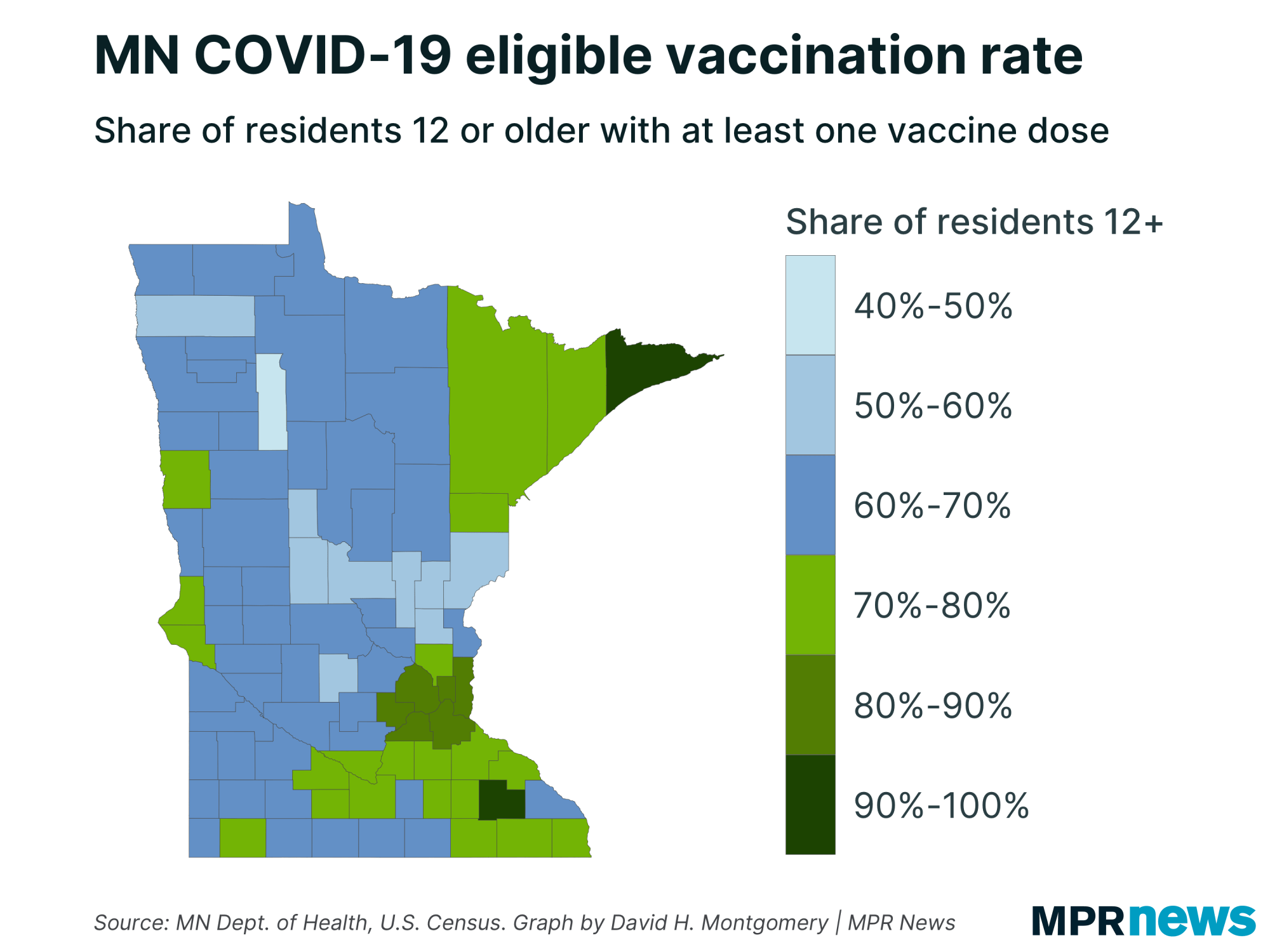COVID-19 in MN: Active cases hit new high; Mpls., St. Paul tighten eatery regs

Go Deeper.
Create an account or log in to save stories.
Like this?
Thanks for liking this story! We have added it to a list of your favorite stories.
3 things to know:
Newly reported and active case counts climbing
Positive test rate tops 12 percent; officials find 5 percent concerning
1,508 hospitalized, 257 in ICU
Updated 2 p.m.
Minnesota continues to get whacked by a post-holiday COVID-19 surge driven by the omicron mutation.
The newest state Health Department figures show new cases averaging nearly 10,000 a day the past seven reporting days. Confirmed, active cases came in at nearly 52,000 — a count that’s more than doubled over the past two weeks and is now at its highest point in the pandemic.

The percentage of COVID tests coming back positive is trending above 12 percent, according to MPR News calculations — about twice the 5 percent officials find concerning.
While the data is still somewhat messy — most of Wednesday’s newly reported cases came from from late last week — there’s no doubt the state is struggling from a massive surge that began in the Twin Cities metro area but is swamping much of the state now.
Turn Up Your Support
MPR News helps you turn down the noise and build shared understanding. Turn up your support for this public resource and keep trusted journalism accessible to all.
Separately Wednesday, Minneapolis and St. Paul leaders said their cities will temporarily require either a proof of vaccine or a recent negative COVID test before for customers at all businesses where people are eating and drinking. It starts next week.

Data collected by the federal Centers for Disease Control and Prevention show all Minnesota counties currently with a high level of virus transmission.
“The omicron surge has most definitely reached Minnesota,” Minnesota Health Commissioner Jan Malcolm told reporters last week. She said it’s spreading “like wildfire” here and across the country and “we just need to expect that it’s going to be the norm for us in coming weeks.”
COVID hospitalizations remain high — 1,508 people are hospitalized with 257 needing intensive care. While ICU admissions are tending down, non-ICU hospital admissions are rising sharply.

Last week, Minnesota hospital CEOs begged people not to come to emergency rooms seeking COVID tests or other nonemergency care. “Hospitals are literally full,” the group warned. “ICUs are full, emergency departments are full, medical-surgical units are full, hallways are full, and surgeries are being canceled.”
On Wednesday, Gov. Tim Walz said he’d tap $40 million from the state’s share of federal COVID relief money to help boost hospital staffing, including costs for nurses who will “work 60 hours per week for 60 days to provide care to patients at certain Minnesota hospitals dealing with staffing shortages due to COVID-19.”
The state's death toll stands at 10,887 including 49 deaths newly reported on Wednesday. Deaths typically follow a surge in cases and hospitalizations. In past COVID-19 waves, it’s been the last of the key metrics to improve.

Thanks to vaccinations, Minnesota is better positioned now than during its fall 2020 and spring 2021 spikes. Nearly 77 percent of state residents age 12 and older have received at least one vaccination shot, with almost 73 percent now completely vaccinated.

The state is seeing progress in getting boosters into Minnesotans who’ve already been vaccinated.
However, the struggle continues to get first shots into more Minnesotans. Wide gaps remain in the vaccination rates among regions and counties.



